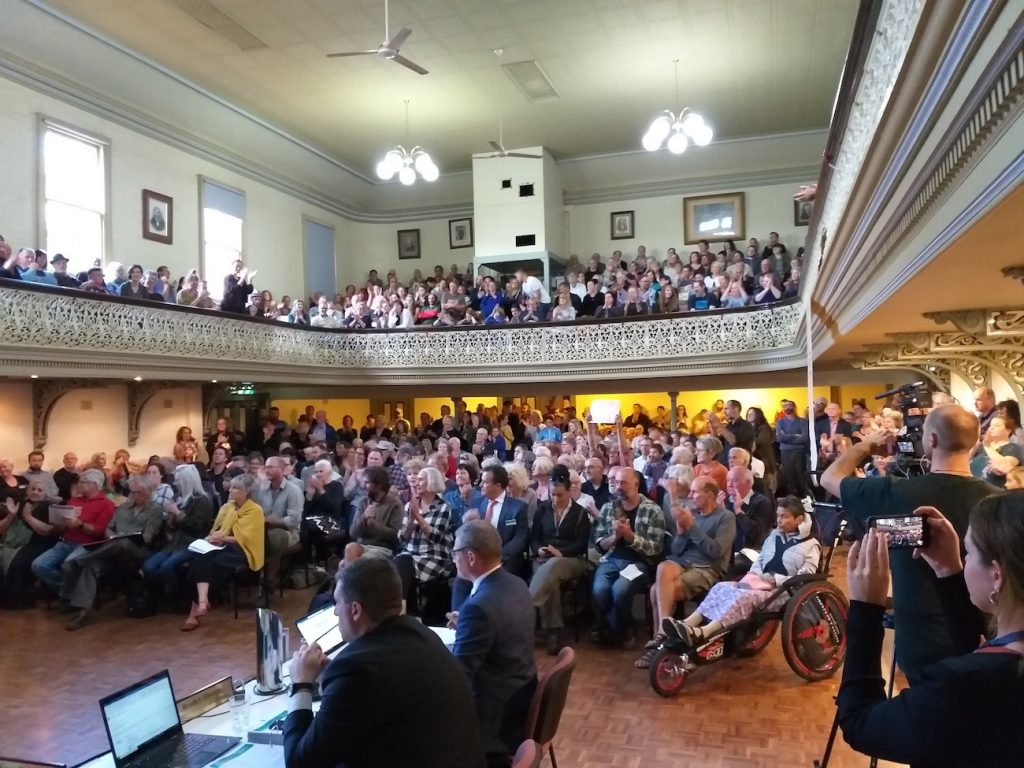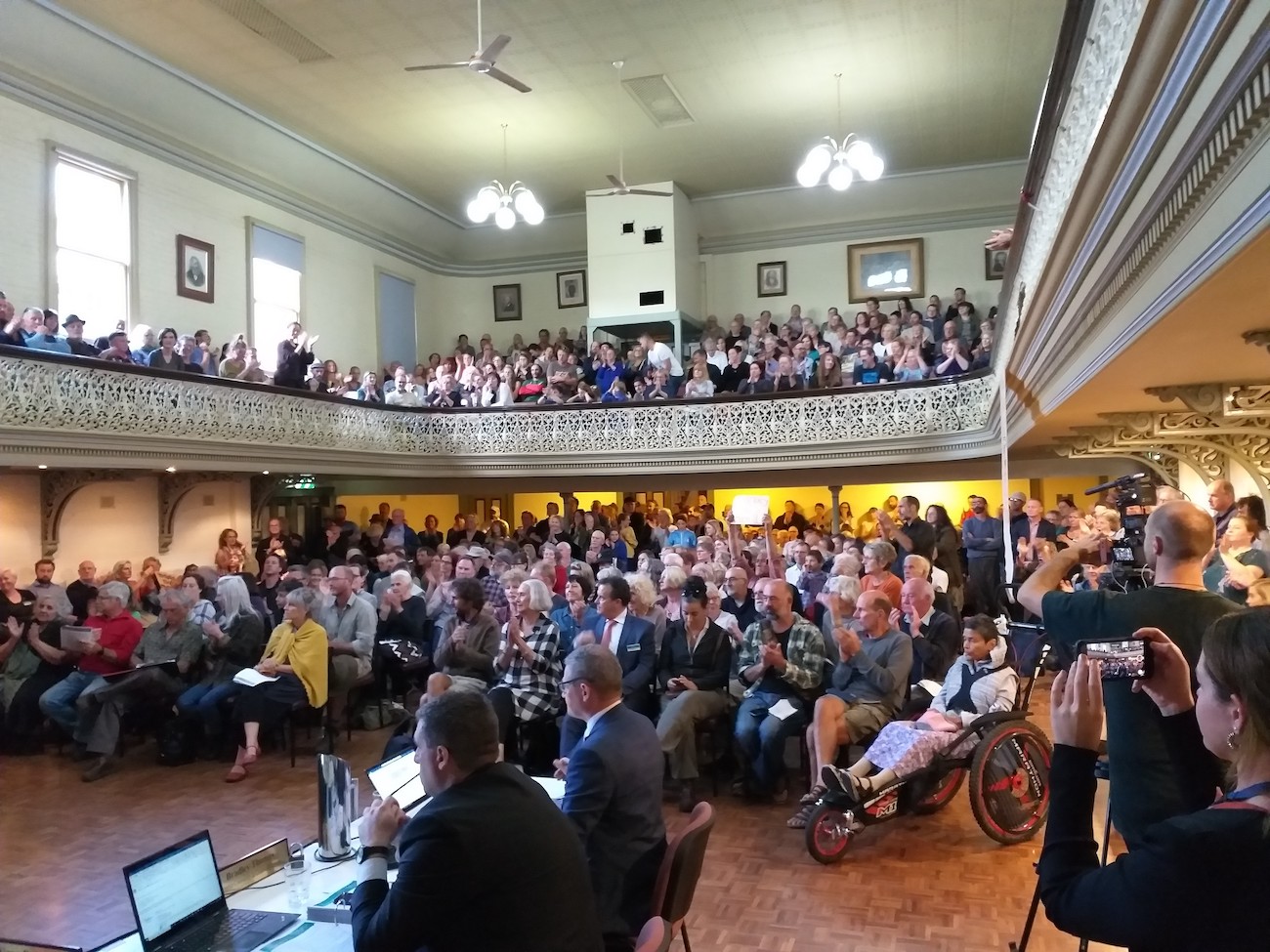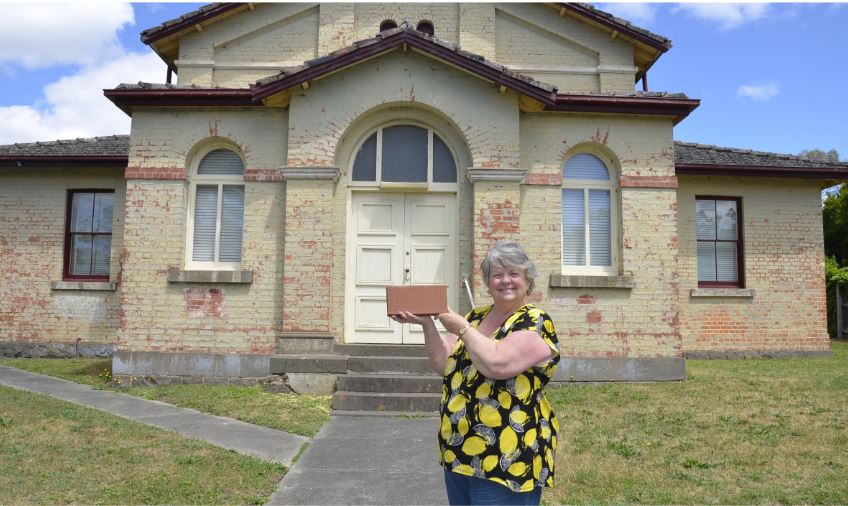June 1st, 2020The Great Divide: residents v. council on planning
Last week, The Local reported on the failure of 131 shire residents to get Hepburn Council to delay a crucial review of planning. In the second of a two-part series, Kevin Childs looks at complaints of lack of cooperation by the council and its response.
COMMUNITY satisfaction with the Hepburn Shire Council has seldom been high. A survey last year revealed that it had scored 51 per cent on its consultation and engagement satisfaction rating compared with 55 per cent for councils similar to Hepburn and 56 per cent for all Victorian councils.
According to Ross Ulman, it’s not the number of opportunities for community consultation that’s important, but the willingness of consultants and the council to genuinely listen to the community’s concerns and aspirations.

Mr Ulman, spokesman for the 131 ratepayers who sought the review postponement, said a “them and us” feeling had developed, rather than the spirit of cooperation the community wanted and expected.
Among the reasons for this were lack of consultation over removal of geese from Lake Daylesford, the highly controversial Local Law No. 2 and the planning permit for 17 Smith Street, Daylesford.
He said that there was no deadline to prevent the review being postponed until the pandemic abated and a regimen of genuine community consultation had been jointly developed by the council and the community.
The Mayor, Cr Licia Kokocinski, wrote to the upset residents, but Mr Ulman said she did not focus on their specific concerns.
A month after the group’s initial request, council CEO Evan King weighed in by quoting the newly proclaimed Local Government Act’s community engagement principles, while ignoring the request of the residents for a postponement of the review pending implementation of the much improved consultation and engagement provisions of the new Act.
“The community wants to work cooperatively with the council to achieve the best outcomes for the shire,” Mr Ulman said. “But, as they say, it takes two to tango.”
When communication, including face-to-face focus groups, became impossible, the residents sought a delay in the review until normal life had resumed.
Mr Ulman said the review would lead to a planning scheme for the next 20 years. “It is or should be, self-evident that [the scheme] requires genuine and thorough community consultation and not just activity that will allow a consultation box to be ticked”.
But the council denies this, saying, contrary to some common beliefs, a planning scheme is not a static document that would “be in force for 20 years”.
“Planning schemes should undergo regular updates in matters such as land use zones, local policy heritage and neighbourhood character and other matters,” the council said in a statement.
“Unfortunately, the Hepburn planning scheme has not had recent updates and there still remains a large amount of policy work to progress with in the immediate future.”
The 2019 Planning Scheme Review, for instance, found a need for township structure plans.
“In the case of Daylesford, matters such as a review of residential land supply, heritage and open space should be addressed. For the Shire’s five main townships this work is a priority that is intended to be progressed in 2021 and 2022. Each of these projects will include comprehensive community engagement that is specific to each township.”
Mr Ulman said, however, that the earlier authentic consultation occurred the more likely the scheme would represent the community’s interests and aspirations.
Once a draft scheme was sent to the minister and exhibited for community comment it was probably too late for significant changes to be made, he said.
The council’s view is that it is committed to producing an updated planning scheme and is working with the community and state government to ensure it met the standards ordered by the minister. Councils could spend two or more years on such a scheme.
“Hepburn Shire Council has not compromised community engagement for this project, however, we acknowledge that some parts of the engagement have had to be done a little differently due to the COVID-19 implications.”
The council says it has enough resources to make progress with the revised scheme and make sure it was a “more robust first step” in better planning.
Mayor Kokocinski said the State Government had changed planning laws, which covered some of the criticism.
“I understand that requests for Zoom meetings to further discuss concerns were turned down, so I am not sure what else we could have done. At the time, due to increasing the level of restrictions and isolation measures, all meetings were cancelled and replaced with Zoom where and when possible.”
Image: a packed Daylesford Town Hall with Local Law No. 2 on the agenda earlier this year.
Words: Kevin Childs | Image: Kyle Barnes










